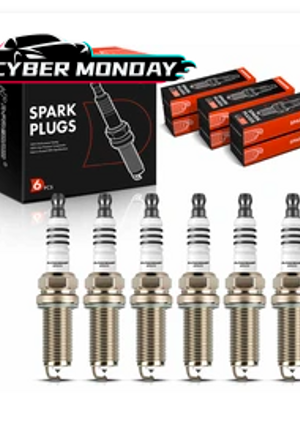
What is a Starter Motor
British Summer Time
at TBC
Tickets
Event Details
The starter motor is a crucial component in any internal combustion engine vehicle, responsible for initiating the engine's operation. Without it, starting a car would be an arduous task, as it replaces the manual effort required to crank the engine. This article explores the purpose, components, types, working mechanism, and maintenance of starter motors.
What is a Starter Motor?
A starter motor is a small but powerful electric motor that cranks the engine to begin its internal combustion process. It draws power from the vehicle's battery and engages with the engine’s flywheel or flexplate to turn over the crankshaft. Once the engine starts running under its own power, the starter motor disengages.
Components of a Starter Motor
A typical starter motor comprises several key components:
-
Electric Motor:
Generates the torque needed to turn the engine's crankshaft. -
Solenoid:
A relay switch that engages the starter motor with the flywheel when the ignition key is turned. It also acts as a bridge to transfer electrical current from the battery to the motor. -
Drive Gear (Bendix Gear):
A small gear that meshes with the engine’s flywheel to transmit motion. -
Armature:
The rotating part of the motor that generates the necessary mechanical energy. -
Field Coils or Permanent Magnets:
Create a magnetic field to drive the armature. -
Brushes and Commutator:
These components ensure electrical contact and continuity for the armature’s rotation.
How Does a Starter Motor Work?
The operation of a starter motor is simple yet critical to engine ignition:
-
Ignition Activation:
When the ignition key is turned or the start button is pressed, the battery sends electrical current to the starter solenoid. -
Engaging the Flywheel:
The solenoid pushes the drive gear (Bendix gear) into engagement with the engine's flywheel. -
Cranking the Engine:
The motor spins, turning the flywheel, which rotates the crankshaft. This movement allows the engine to draw in air and fuel, compress the mixture, and ignite it. -
Disengagement:
Once the engine starts running, the starter motor disengages automatically to prevent damage.
Types of Starter Motors
Starter motors come in different designs to suit various vehicle types:
-
Direct Drive Starter:
The traditional type, where the motor is directly connected to the drive gear. -
Gear Reduction Starter:
Utilizes gears to increase torque, making it more efficient and suitable for modern engines. -
Permanent Magnet Starter:
Lightweight and efficient, these are common in smaller vehicles and modern designs. -
Coaxial Reduction Starter:
Combines the benefits of gear reduction and direct drive for high-performance applications.
Maintaining a Starter Motor
Proper care and timely maintenance of the starter motor ensure reliability and longevity. Here’s how:
-
Inspect Electrical Connections:
Check for loose or corroded wires and clean battery terminals regularly. -
Monitor Battery Health:
A weak battery can strain the starter motor and reduce its efficiency. -
Listen for Warning Signs:
Clicking sounds, grinding noises, or failure to start are signs of a failing starter motor. -
Periodic Cleaning:
Keep the starter motor free from dirt and debris to prevent overheating or mechanical wear. -
Replace Worn Components:
Brushes, solenoids, and other parts should be replaced if they show signs of wear.
Conclusion
The starter motor plays a pivotal role in ensuring that your vehicle starts efficiently. Understanding its function, recognizing signs of failure, and performing regular maintenance can prevent breakdowns and costly repairs. A well-maintained starter motor not only ensures reliability but also enhances the overall performance of your vehicle, keeping you on the road with confidence.
